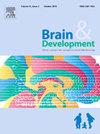Challenges in genetic counseling for RYR1-related myopathies
IF 1.3
4区 医学
Q4 CLINICAL NEUROLOGY
引用次数: 0
Abstract
Background
Ryanodine receptor 1 (RYR1)-related myopathy is inherited in an autosomal dominant (AD) or recessive (AR) manner. We experienced two sporadic cases of RYR1-related myopathy. One patient harbored a de novo missense variant, whereas the other harbored compound heterozygous variants inherited from each parent. The possibility of dual inheritance makes it challenging to distinguish between these two inheritance patterns based only on clinical information.
Methods
In this study, PubMed was used to perform literature review on genetic counseling for RYR1-related myopathy.
Results
Recently published manuscripts have emphasized the importance of comprehensive genomic analysis of all RYR1 coding regions.
Conclusion
RYR1-related myopathy without family history may be associated with de novo heterozygous AD variants and biallelic involvement in AR. In cases of AR traits, a prenatal diagnosis may be required from the parents. Therefore, precise genetic information is essential for genetic counseling. It would be impossible to assess the inheritance patterns from genotypes only if monoallelic missense variants were identified in patients with congenital myopathy. This review emphasizes the importance of comprehensively analyzing all coding regions using trio samples for better genetic counseling.
ryr1相关肌病遗传咨询的挑战
dryanodine受体1 (RYR1)相关肌病以常染色体显性(AD)或隐性(AR)方式遗传。我们经历了两例散发的ryr1相关肌病。一名患者携带全新的错义变异,而另一名患者携带从父母双方遗传的复合杂合变异。双重遗传的可能性使得仅根据临床信息区分这两种遗传模式具有挑战性。方法本研究采用PubMed数据库对ryr1相关肌病的遗传咨询进行文献回顾。最近发表的论文强调了对所有RYR1编码区进行全面基因组分析的重要性。结论无家族史的ryr1相关肌病可能与新发杂合AD变异体和AR双等位基因参与有关。对于AR特征的病例,可能需要父母产前诊断。因此,精确的遗传信息对遗传咨询至关重要。如果在先天性肌病患者中发现单等位基因错义变异,则不可能评估基因型的遗传模式。这篇综述强调了利用三组样本全面分析所有编码区对更好的遗传咨询的重要性。
本文章由计算机程序翻译,如有差异,请以英文原文为准。
求助全文
约1分钟内获得全文
求助全文
来源期刊

Brain & Development
医学-临床神经学
CiteScore
3.60
自引率
0.00%
发文量
153
审稿时长
50 days
期刊介绍:
Brain and Development (ISSN 0387-7604) is the Official Journal of the Japanese Society of Child Neurology, and is aimed to promote clinical child neurology and developmental neuroscience.
The journal is devoted to publishing Review Articles, Full Length Original Papers, Case Reports and Letters to the Editor in the field of Child Neurology and related sciences. Proceedings of meetings, and professional announcements will be published at the Editor''s discretion. Letters concerning articles published in Brain and Development and other relevant issues are also welcome.
 求助内容:
求助内容: 应助结果提醒方式:
应助结果提醒方式:


